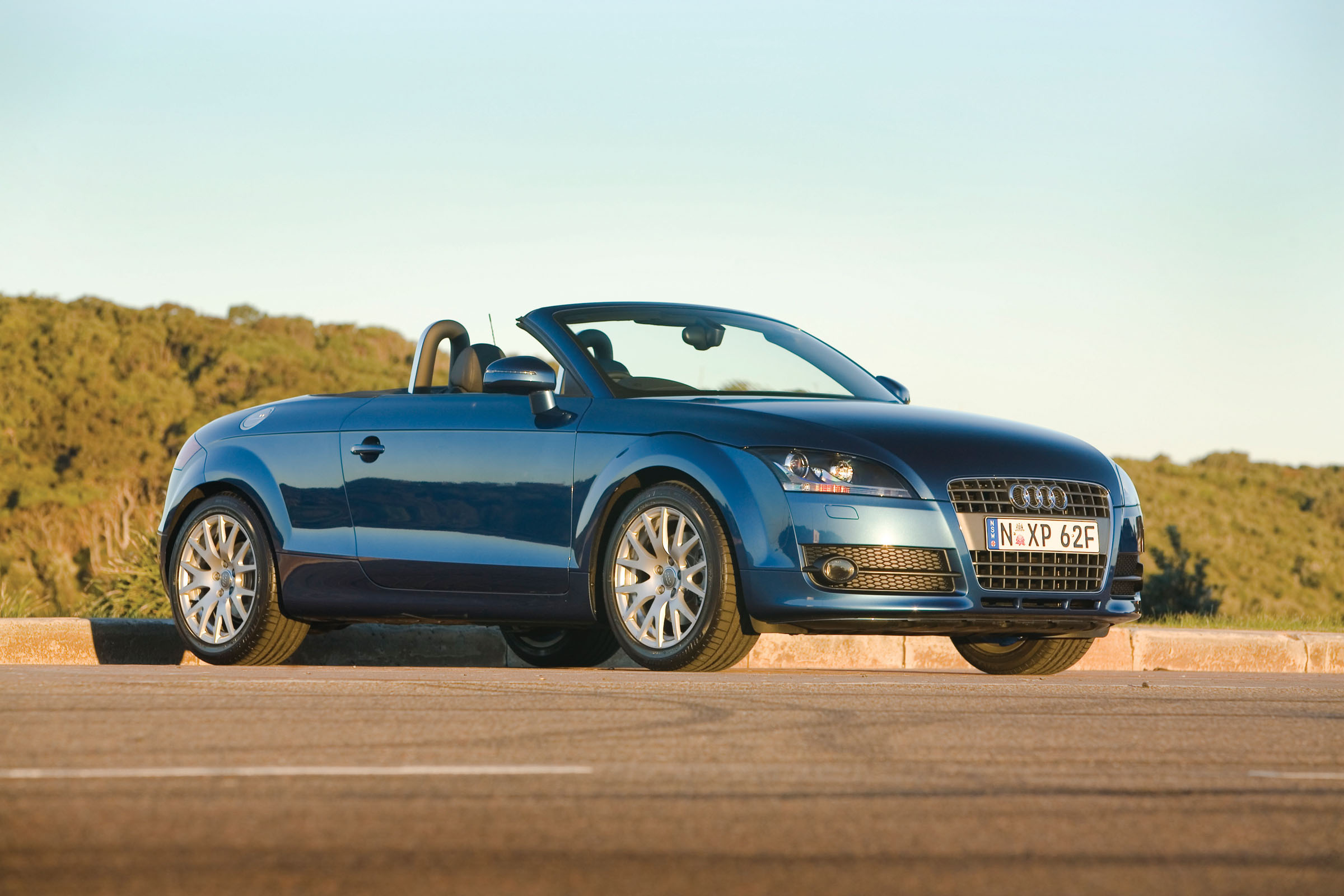By Ewan Kennedy
The recent introduction of the third generation Audi TT coupe and the imminent arrival of the open-top roadster has created quite a stir of publicity about the seriously stylish sports car.
Quite a few trade-ins are already appearing in used-car yards so here are some hints, tips and historical info to help you get yourself into a terrific TT.
Audi TT is great fun to drive but the front-drive models feel more like a warm-to-hot hatch than a full-on sports car – not surprising because underneath that gorgeous Audi skin there’s a Volkswagen Golf GTI.
Introduced to Australia in May, 1999, the Audi TT was a hit right from the start, chiefly because of its radical shape. It was originally sold only as a coupe – potential buyers were forced to wait another year for the roadster.
The fascinating domed theme of the body carries through to the cabin. Big circular dials and ventilation outlets really look the part.
Later models had modified suspension and a rear wing to push the tail to the road at speed.
The latter spoils the purity of the visual effect to my way of thinking. There were suggestions that a lift-up wing in the manner of a Porsche 911 would have been a better fix but Audi says this could have been too expensive.
The gen-two Audi TT, which arrived in Australia in November, 2006, sorted out the problem. It has a rear wing that’s hidden at lower speeds and raised at “moderate speeds” above 120km/h.
The original Audi TT was offered with 1.8-litre four-cylinder engines, in either light-pressure or high-pressure turbocharged format, the latter coming with the traction advantage of quattro all-wheel drive. The capacity of the four-cylinder unit was increased to 2.0 litres using a turbocharger with the second generation TT.
In December, 2004, a 3.2-litre V6 was shoehorned under the bonnet of the Audi TT coupe but not the roadster. Sensibly, the TT 3.2 also received the quattro system.
As Audi regarded the TT as being a pure sports car, no automatic transmission was offered until March, 2003, when a six-speed torque-converter auto was offered with the low-pressure engines.
Audi TT is a high-tech car and should only be serviced and repaired by professionals. Good amateurs can tackle some of the routine maintenance work should they be so inclined. Make sure you’ve got a workshop manual close at hand, though. Spare parts prices aren’t cheap but are in keeping with others in this class.
What to look for
•Look for signs of previous crash repairs. A ripply finish in any of the panels, or a mismatch in paint colour from one section to the other are fairly easy to spot.
•Look at the floor of a roadster for signs of water entry. If there’s the slightest cause for concern, get permission from the seller to lift the carpets.
•Check the roadster’s roof seals correctly when it is closed and that it doesn’t have any tears or cuts, especially around the stitching.
•Gear changes should be reasonably light but remember the gearbox is a long way from the shift lever, with a multitude of links connecting the two. This can give it a slightly spongy feel.







